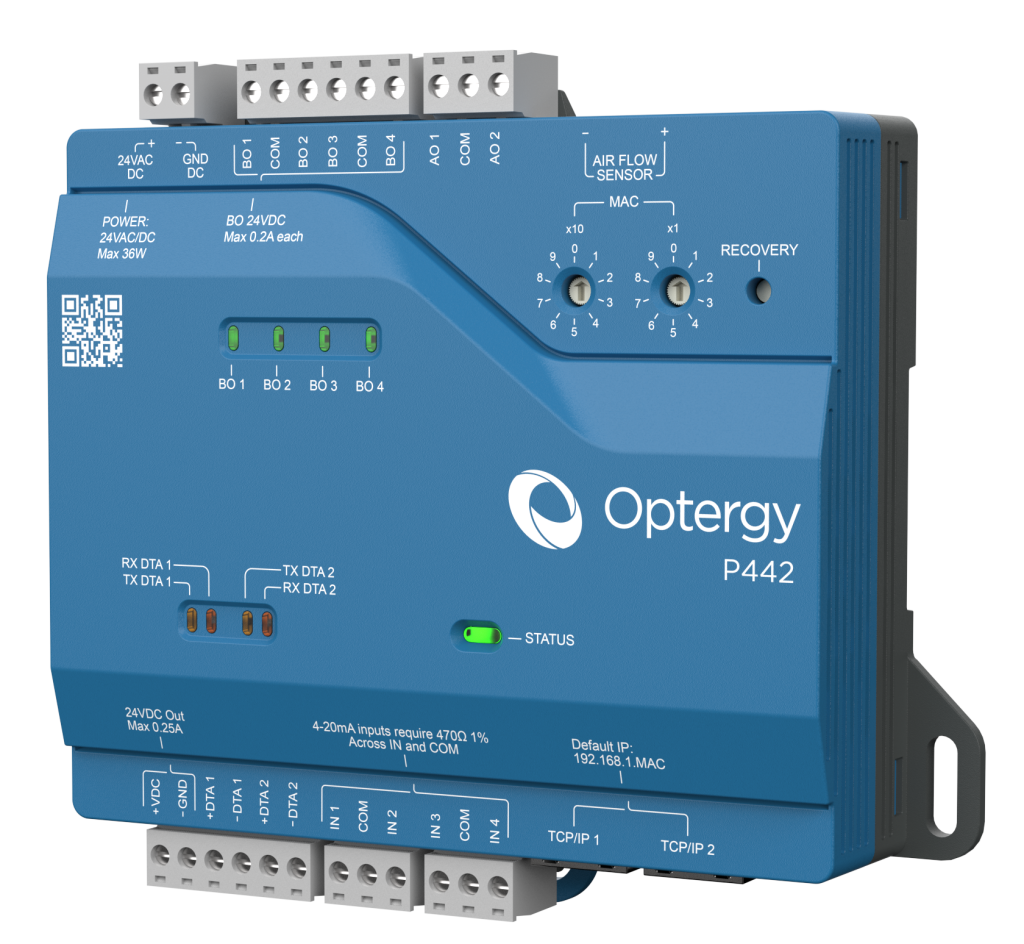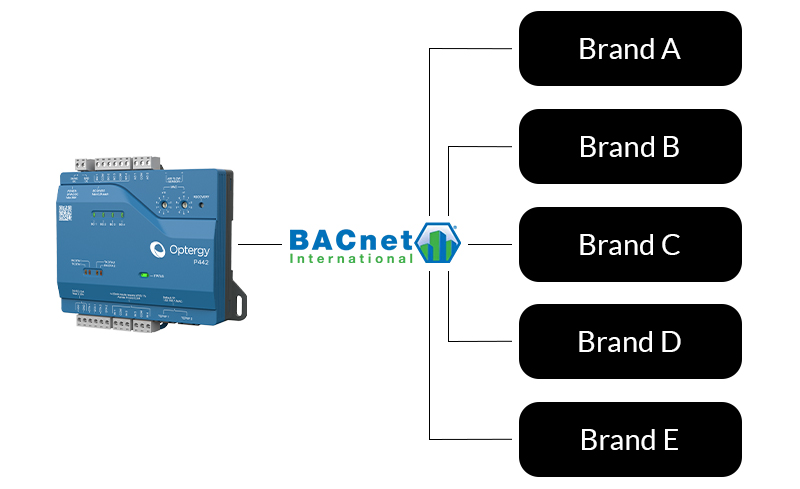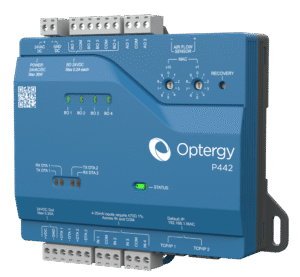The Optergy P442 is a fully programmable, BTL-ASC level certified controller engineered to give system integrators complete freedom and control. Whether managing a single zone via the built in web interface or interacting with any BACnet building automation system, the P442 combines performance, scalability, and simplicity in one reliable device.
With native support for BACnet IP/MSTP, Modbus RS-485 gateway, and REST API, the P442 integrates seamlessly into any building management or IoT system without licensing, software fees, or brand limitations. Designed for flexibility and dependability, it gives integrators everything they need to deliver smarter, faster, and more efficient control across any project.


System integrators should not be locked into one ecosystem. The P442 is built with an open-protocol architecture based on BACnet and BTL certifications to give you full compatibility and control across any brand.
It communicates effortlessly with major platforms utilizing the BACnet protocol, including Niagara, Trend, Siemens, Honeywell, Schnieder, Johnson Controls FX and others, allowing you to expand, retrofit, or mix technologies without compromise. With support for BACnet IP/MSTP, Modbus RS-485 gateway, and a secure REST API, you can connect, program with Optergy Studio, and monitor across networks with ease.
The P442 gives integrators complete control to standardize, modernize, or scale their systems as needed—no restrictions, no proprietary limitations.

One Controller. Every System. Infinite Possibilities.
Engineered for Real-World Demands
Engineered for Real-World Demands
The P442 delivers the performance, durability, and quality that
system integrators can depend on.

Live View debugging makes it simple to verify control sequences on the fly, while batch firmware updates and backups streamline large-scale rollouts.

Live View debugging makes it simple to verify control sequences on the fly, while batch firmware updates and backups streamline large-scale rollouts.

Live View debugging makes it simple to verify control sequences on the fly, while batch firmware updates and backups streamline large-scale rollouts.


